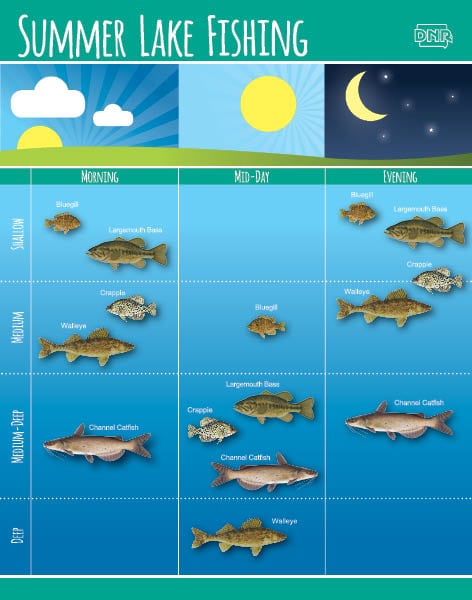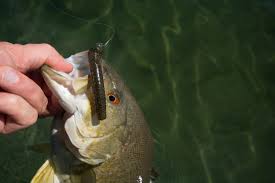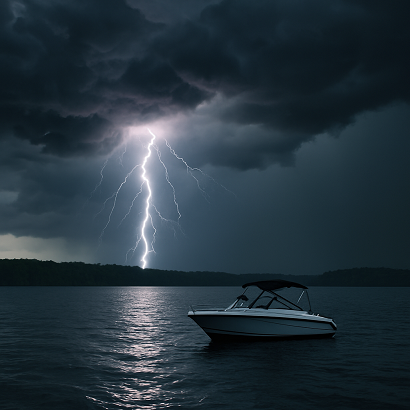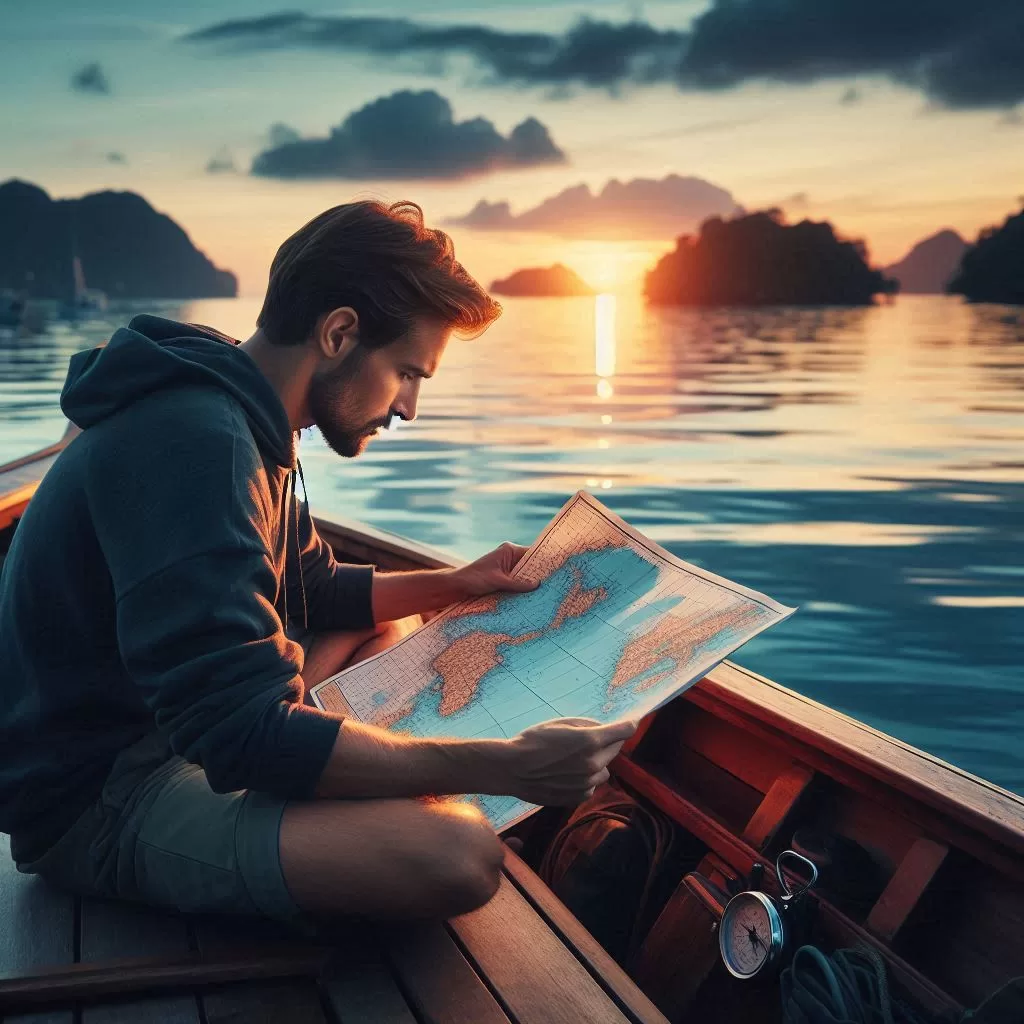Even the most skilled and sophisticated angler can walk away from a body of water without making a catch. What is even more troubling is when you can’t even get a bite…
We’ve all had those slow days out on the water; regardless of whether you are fishing from the shoreline, a dock, or a tricked-out fishing boat. You know, the ones with gadgets that literally let you see your bait swimming around underneath the boat. Fishermen now are buying those sonar scopes, I think they are so clear and work so well that you can talk to the fish!
There are days when I’ve walked down to my dock and caught 10 fish in an hour and then there are days when I do the same things, then change everything, then begin to question my every decision.
There are so many variables that a good angler needs to consider each and every time you make the choice to load up your gear and head out for a day on Lake Wallenpaupack.
Here are a couple simple concepts that might help you before you try and catch that next lake monster; remember…if you do catch a lake monster, please post it on our Wally Bites Group page on Facebook!

Let’s start with an easy one for 2020 – if you are on the water, or in view of the water throughout the summer months you know how busy the lake can get. Let alone the craziness of many of our coves. Believe it or not, fish can be displaced by heavy boat traffic. Often times, it’s the noise associated with boats. This will move fish to different locations throughout the lake, you still can fish your common areas (points, beds, shelves, etc.) but they may move in and out of those areas depending on how busy things are out on the lake. Lake Wallenpaupack is no different, we see our fair share of traffic and noise. Another common element that will move fish which is related to heavy boat traffic is pollution. Keep that in mind when your can or bottle accidentally lands in the water, sinking to the bottom. Let’s not forget about gas spills or oil leaks either, they are more common than you think. Both can easily have an impact on our habitat.
Next up on our list of things that could go wrong is fishing during the off times of the day. In my mind, there is never a wrong time of day to be fishing! However, the fish will tell you something else. Lake Wallenpaupack is quite unique as I’ve personally caught some of the biggest fish from this lake between 10am and 2pm – not the ideal timeframe as most will tell you. The common link to fishing all across the country seems to support that fishing in the early morning and evening to late evening are the best fishing times. There simply seems to be more activity with bait during these timeframes and it definitely helps support a stronger bite during the early morning and evening hours. What could be a few additional reasons – my research has indicated that fish are on the move during feeding – while at other times of the day are simple holed up in a more ideal location for hiding, resting and digesting.

I’m going to steer us in a different direction for a few paragraphs. Let’s talk weather. We all have experienced lockjaw fishing – in my experience this typically happens after a cold front moves out. As the cold front moves in, the fish are feeding in what I’d characterized as more aggressive pattern – so fish that approaching cold front hard. Once its through and gone, you will see that fishing can be difficult. It’s not impossible to catch fish but there definitely seems to be a consensus among the fish to stop feeding. Maybe I’ll follow up on this and explain why at a later date. I cannot give you everything you need all at once or you will never come back to read anything else we write.
Sticking with the weather theme, is it good to fish in the rain? I would state through experience that fishing in and during a rain storm can be productive for several reasons; including the oxygenation that occurs when rain water hits the surface and the cooling of the surface temperature of the water. In addition, fish seem to like darker, cloudier days. A couple of negative impacts of rain includes acid rain which can impact the ecosystem and environment. There is also the potential for runoff into Lake Wallenpaupack; things like soil, debris, pollutants and a ton of food sources from land and air.
What about the guides that love fishing on a windy day? I literally hate fishing when its windy but I’ve heard things from both sides of the argument. Strong wind impacts the entire water column. Winds create friction at the top of the water and build turbulence and current which impacts just about every fish within the environment. Any type of disturbance within the water should and in my guesstimate does impact the fishing. Some winds can build current that pushes bait fish around as they aren’t strong enough to fight it – this could be one positive aspect if you can find out where the bait is schooling up and locked into a position.
Let’s move along the discussion to focus on location. Yes, you can literally be fishing the wrong lake or body of water. Not all waterways are created equal and that is something to consider. That isn’t what we are referring to with regard to location in this context. We are simply stating that you are fishing in the wrong spot on Lake Wallenpaupack. The good spots are protected by knowledgeable anglers but they are also changing constantly. Where fish go and where they end up is based on everything you can imagine. Most common factors are water temp, time of year, barometric pressure and food sources. Most anglers will tell you that if you find the food source you will find the predatory fish you are looking to catch. Let’s just say that the fish aren’t always in the same spot. Figuring out why and where is the challenge.
We have so much to cover and not enough time or space to cover it all. Let’s kick off speed. Not talking about how fast you troll but I would recommend between 1.7mph to 2.3mph….talking about speed of your retrieve. Too fast, too slow, not enough twitch motion, too much motion, etc… My intel suggests that people are working their artificial baits too fast in Lake Wallenpaupack. If I had to give an answer as to why fishing fast here is bad, I’d suggest its due to an overabundance of bait that lives in the water. Are Lake Wallenpaupack fish lazy? Maybe….

How about size, funny how size matters for fishing but not for anything else. My wife was excluded from this survey. I’m not sure if it requires a big lure to catch a big fish as I’ve seen all kinds of really amazing fish pulled from this lake on smaller than expected lures. I have found that the goal is to match the size of the natural bait in the water. If you are throwing something that is outside the 4-1/2” to 5-1/2” baseline lure for Lake Wallenpaupack you can still catch fish but I think these are pretty reasonable guidelines to follow. Can you catch an 8lb large on a 3” Ned, sure….can you catch an 8” inch smallmouth on a 6-1/2 jerk bait, yup! The idea here is that you want to try and figure out what’s working and what’s not. Sometimes the big lures work and sometimes the small lures work. That’s the goal, figure it out and win.
Let’s just say the following when we are talking about lure’s and artificials, sometimes you are just fishing the wrong type of lure. Maybe you should be fishing topwater instead of a crankbait, maybe you should be working a senko instead of a jerk bait. It’s so easy to use the wrong lure at the wrong time. Not only can you be using the wrong lure but you are probably fishing whatever you’re using at the wrong depth. Keep that in mind when you are selecting which lure to use. You have to consider which lure and where it’s going to go once it’s in the water.
If you fish a bunch, I bet you knew color was going to eventually make into this article. How important is color? It’s one of the most important differentiators when finding success or failure. I equate color to a trout fisherman’s match the hatch approach. The more real and lifelike a fly looks to a trout the more success you are going to have…At different water depths colors look different, so just because you buddy is throwing a fluorescent orange spoon doesn’t mean that he won’t catch a fish because nothing in the water looks like that spoon. Color matters in context, it should look like something in the water but it doesn’t always have too. Find out which colors work for you and work them hard. Guess what? Once you’ve figured out what colors work then you need to figure out why they change so frequently. My guess is sun and moon, water clarity and water temp play a big part in which colors you should be using. Lot’s of folks use the wrong color on a moon-lit evening is all I’m saying. I mentioned water temp, that plays a big part in our lake as well.
Don’t ask me how water temp impacts colors but we believe that the colder the water the clearer the water.
Check daily water temps on WallyBITES.com!
Let’s dig a little deeper on this water temp consideration. Much of water temp has to do with oxygenation in the water. The cooler the water the easier it is for most fish species to breathe and replenish their energy source. As the water begins to turn into bath water, certain species are impacted. Trout, Walleye & Stripers are a few that aren’t a big fan of warmer water temps. As you can imagine, as the water temp changes certain species of fish react differently. Some may move into the shallows; some may move into the depths of our lake in search of a more stable environment.
For all you bait fishermen and women, when you aren’t fishing alewife, minnows, eels and baby trout which I’m sure you’ve found to be effective, what else is working? Is there ever a time where you just felt like the bait you were using wasn’t working? I’ve heard and seen people using frogs, ducks, mice, snakes, panfish and anything else they think might work. Sometimes, the fish just aren’t biting. You can have all the right gear, all the right lures or baits and even the best guys skunk sometimes. This is probably where the phrase “Even a Bad Day Fishing is Still Better than a Good Day at Work”.


